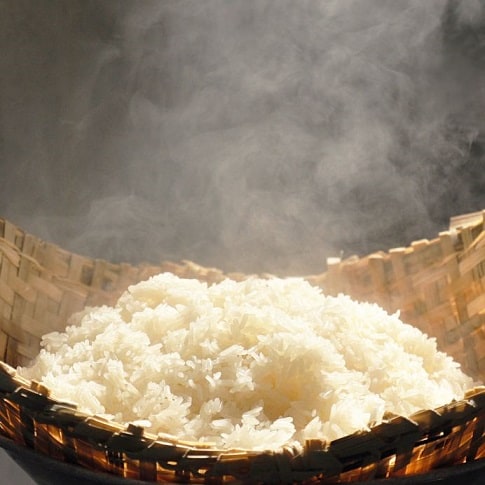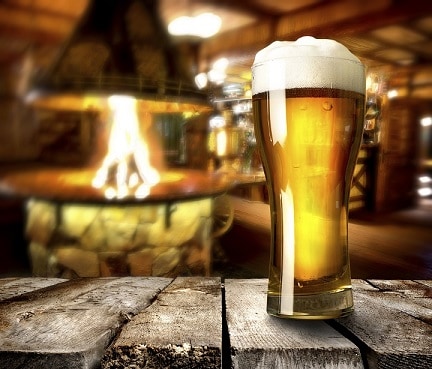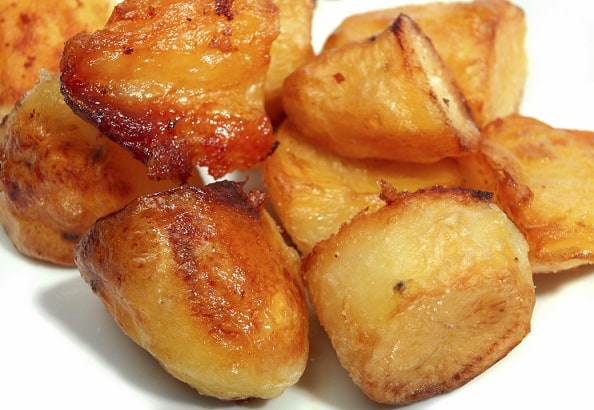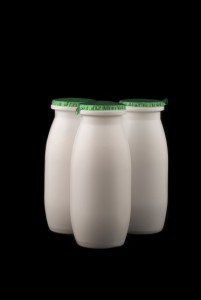 Do you ever get annoyed when huge internet health sites blandly insist that diet has nothing to do with acne? Despite clearly noticing a correlation to certain foods you like, maybe ice cream or milk chocolate?
Do you ever get annoyed when huge internet health sites blandly insist that diet has nothing to do with acne? Despite clearly noticing a correlation to certain foods you like, maybe ice cream or milk chocolate?
You wouldn’t be the only one. There’s a massive disconnect between the thriving underground of the acnesphere where everybody has certain foods that break them out, and the “official” acne remedies.
Glowing first-hand reports after banishing certain foods are all over the internet. Yet for years, they haven’t made a dent in anything, bouncing off the bubble of professional dermatology.
The good news is that official studies on acne are finally tumbling in. Recently, a study analysed Afghan youths and noticed high acne levels in dairy and egg lovers.
Today, we have a Korean study on skin hydration and oiliness, testing several broader dietary patterns. Let’s get started:
The methodology
You can’t take into account every obscure cultural dish, but the scientists compiled a food frequency questionnaire asking about 63 of Korea’s most popular foods.
For each one, all 84 participants were graded from 0-9, which included 3 times daily (9), two times daily (8), once daily (7), 1-2 times per week (4), six times per year (2) and never (0).
The participants were also banned from using any cosmetics on the test day. A whole year would been a cleaner experiment, to confirm that diet was truly pulling the strings, but giving them this freedom is more reflective of the real world. The BMI was average at 24.8, preventing obesity’s hormone fluctuations from scuppering things. Likewise, the age was fairly young, ranging from 19-37 and averaging at 23.2. The only flaw is the lack of teenagers.
Smoking and drinking levels were measured, and patients taking skin medications like steroids or retinoids were barred. So was anybody with atopic dermatitis or psoriasis.
Statistical geniuses were dusted off and brought out of storage in the cupboard. They sifted through the 63 foods, and crafted four dietary patterns:.
ONE – a high intake of vegetables, mushrooms, beans, meats, seaweeds, fat and oils and condiments.
TWO – plenty of potatoes, cereals, saccharides and fish and shellfish. High in carbohydrates.
THREE – lots of potatoes, fruits, eggs, seeds and nuts, less alcohol.
FOUR – few beans, but plentiful meats, dairy products and beverages, and alcohol. Low in carbohydrates.
The 84 men and women were told to lie flat on their backs, in a temperature (22C) and humidity (40-60%) controlled room for 30 minutes. They probably expected cryogenic freezing, but instead, scientists tested their skin’s hydration, sebum production, and acidity.
The moment of truth
 Did the scientists observe differences in skin quality? Differences which could manifest in improved acne down the line? Yes, they did.
Did the scientists observe differences in skin quality? Differences which could manifest in improved acne down the line? Yes, they did.
Group 1’s skin was the least changed, but group 2 had significantly decreased skin hydration. Group 3 had slightly reduced skin PH (not particularly important), and a small reduction in sebum production overall.
Group 4 had a large increase in sebum production. Sebum is your skin’s oil, which clogs pores, decreases their oxygen levels, and allows p.acnes bacteria to take over.
There’s always a chance that devoted followers of one diet accidentally gravitate towards other lifestyle choices, such as less exercise. Wine connoisseurs constantly argue that “alcohol is poison” studies are skewed because heavy drinkers are also fatter and smokier.
Therefore two models were created, one adjusted only for calories, and a second adjusted for sex, age, smoking, BMI, and physical activity.
Diet 2 negatively impacted skin hydration in both model 1 and 2, shoring up the promising results. Likewise, in both models, group 4 still had higher sebum production. The models only seriously impacted the skin PH scores.
Men and women also differed, as in group 2, only men had reduced skin hydration when analysed separately. Likewise, for group 4, women’s sebaceous glands were particularly overactive, but in group 3, their sebum production fell, whereas men’s remained static.
Additionally, the overall numbers for sebum and hydration were fairly normal, proving that the scientists didn’t accidentally select 84 participants whose results were inapplicable to the real world.
Combined with the recent Afghan dairy study, this is a fantastic new study for diet affecting acne.
The evidence is now solidifying so fast it can cut a diamond. The scientists agreed: “specific dietary patterns are related to the… sebum content, skin hydration and skin pH on the foreheads of healthy Korean adults“.
Advantages of the study
While we’ve have a few studies analysing individual foods like sunflower seeds, this is the first analysing overall dietary patterns. That’s great because it reflects the real world; it’s like an uncover mission into the acne underground rather than a clinical experiment conducted in a lab.
We talk all the time here about how, for example, sunflower seeds cause acne but could be drowned out when paired with antioxidant goodness in fruit. Or how a little sugar and vitamin C could be finely balanced.
It would be superior if acne itself was tested, but sebum is one of the main players, alongside antioxidant deficiencies and chronically inflammation. It’s possible to have overflowing sebum on a clear face if high quantities of vitamin E are built into that sebum, but it still accelerates pimples, by giving p.acnes bacteria a warm and cosy home to live in. The longer your pores stay clogged, the further p.acnes can construct impenetrable biofilms.
As for hydration, it’s exactly what is says on the tin. Decreased trans-epidermal water loss (TEWL) through your skin barrier, the same goal that hyaluronic acid creams aspire towards. From a distance, it enriches your skin tone, making existing pimples less blotchy and unsightly.
One methodology quirk was the total exclusion of people with inflammatory skin disorders, potentially unrepresentative of the real world. However, it’s actually an advantage, because it gives us a level playing field. Dermatitis is notoriously dodgy for skin barrier function, which spills over into hydration. Starting with healthy skin helps us to isolate diet’s true effects.
Do the findings match our old strategies?
 On the whole, it slots in like a jigsaw puzzle. For instance, group 2 had the highest carbohydrate intake, and hydration fell. High bloodstream glucose levels are known to form advanced end glycation products, which degrade proteins in the skin and decrease their water storage.
On the whole, it slots in like a jigsaw puzzle. For instance, group 2 had the highest carbohydrate intake, and hydration fell. High bloodstream glucose levels are known to form advanced end glycation products, which degrade proteins in the skin and decrease their water storage.
The scientists were confused about group 2’s abundance of fish, whose omega 3s enhance water storage. However, after excluding the fish data, group 2’s carbohydrates easily had the strongest inverse correlation with hydration. Group 2 was also the most deficient group in vitamins and minerals, including fats and protein, sacrificed for their obsessive carbohydrate love affair, and the amino acid glycine is vital for manufacturing the skin’s collagen.
For group 4, the so-called “Western diet” group, their love of dairy correlates well with oily skin. Milk and cheese aren’t a lighthouse beacon that summons acne instantly, but their IGF-1 is an expert at stimulating your sebaceous glands. What’s more, it enhances the acne-causing power of the hormone insulin. Sebum production spiked particularly sharply in women, and female skin is dramatically more vulnerable to acne hormones.
The lack of beans also made perfect sense, as their estrogenic properties can counteract testosterone and DHT, even though I don’t actually recommend eating them.
The wildcard is diet 4’s massive alcohol intake. Beer and wine’s main acne-causing power is degrading into the inflammatory toxin acetaldehyde, but reports of oily skin during a hangover are everywhere (including from me).
This study reinforces many of our classic diet and acne strategies.
Any divergence from our classic theories?
However, there’s one weird result that undoubtedly stands out: their carbohydrate intakes.
Stuffing your face with carbohydrates slowly increases bloodstream insulin, to shuttle more and more glucose around your body. Insulin ramps up your sebaceous glands just like IGF-1, but in group 4, where the skin’s sebum rivers were deepest, their carbohydrate intake was below average, due to their love of eggs and meat. Meanwhile, group 2 and their bean and potato party was full of carbohydrates, but their sebum showed no change.
Similarly, group 2 was significantly deficient in vitamin A, whereas group 4 were topped up by eggs and cheese. Vitamin A is vital for ending oily skin, binding directly to sebaceous glands; that’s why it forms the basis of topical retinoids and accutane.
These are easily the two biggest surprise of the whole study, the ones that derails our previous acne beliefs the most. Adding more confusion is diet 3, where vitamin A levels were higher again, but this time, sebum in women fell.
The only differences left on the table are milk and alcohol. The safe bet is that IGF-1 is so powerful that it sweeps aside everything, even carbohydrate mania.
However, there’s another possibility that slots in neatly: that group 2 had lower testosterone levels. Their diet was the lowest in fat, and vitamin D was also missing in action, a substance known to increase testosterone (study). Some of meat and eggs’ minerals like zinc, magnesium and selenium are critical too.
Overall, our lesson is that 1) milk may be particularly villainous for oily skin and 2) alcohol must be monitored with an eagle eye.
Any other flaws in the study?
 Yes, because despite including 63 popular Korean foods, they were all grouped together, clouding our vision of whether any individual foods distorted everything.
Yes, because despite including 63 popular Korean foods, they were all grouped together, clouding our vision of whether any individual foods distorted everything.
Again, it’s great to analyse real world scenarios, but certain foods are notoriously linked to acne, like eggs and sunflower seeds. Therefore, it’s possible that a single food hidden in the results is doing all the hard work, making the wider results useless and misleading.
Maybe it’s a traditional Korean spice, or soup with strange flavour enhancing chemicals like MSG. In group 4, alcohol alone could be spiking sebum.
In group 2, the carbohydrate club, it was raining potatoes, but how much sugar did they eat? Korea is a developed country and is gripped by the same hyperactive sugar mania as the US or Europe.
In 2016, the South Korean government even declared war on sugar (not realising it’s an inanimate object), and interestingly, the study barely mentioned sugar. If group 2 was drinking sugary fruit juice for breakfast daily, then starchy carbohydrates could be acquitted of wrongdoing, but we don’t know.
Then there’s the food quality. This mystery surfaced in the Afghanistan dairy study recently, where milk formed a wicked alliance with pimples, but with no mention of grass or grain fed.
Coincidentally, our problem is identical here. Group 4 was the meat, dairy, and eggs squadron, but luckily, grain-fed tends to crank up inflammation (through increased omega 6 fats) much more than oily skin, because the IGF-1 levels don’t vary. The main worry is artificial bovine growth hormones, perfectly legal in South Korea yet banned in the EU.
The study also self reporting, only a nitpicking flaw, but the carbohydrate crew might have played down their candy and cake intake out of guilt. If so, only much higher levels of carbohydrates would evaporate your skin hydration. The beer-swillers of group 4 might have done the same, allowing alcohol to distort the results further.
Overall, these flaws don’t detract even slightly from the big fat conclusion of this study: diet CAN affect your skin quality. The details are just a little blurry.
What about the differences between men and women?
Do they tell us anything new about our acne strategy? The differences all remained when exercise, smoking and BMI were eliminated, so food is firmly in our spotlights:
Group 4 – the most logical. Women’s sebum production spiked particularly sharply, and women’s skin is much more sensitive to IGF-1 from milk. IGF-1 also enhances the 5-alpha reductase enzyme, and therefore DHT levels, another hormone which women are more sensitive to. It’s wild speculation, but it’s also possible that women’s skin is more sensitive to alcohol.
Group 2 – a much stronger drop in men’s skin hydration. A random possibility is that men’s skin hydration is much more sensitive to deficiencies in vitamin C, needed to manufacture collagen, or maybe vitamin A. Fat, fiber, protein, valine, linolenic acid, and vitamin D were also deficient.
However, women also have the cushion of estrogen, a hormone vital for hydration. Perhaps both suffered from the carbohydrate overdose, but the women had wriggle room shielding them.
Group 3 – the most mysterious. Women’s sebum production fell most sharply, and there’s no obvious explanation. Both groups had healthy vitamin A levels, and milk intake wasn’t freakishly low, it just wasn’t gushing around everywhere. It could be 1) a statistical anomaly, or 2) female alcohol vulnerability again, because group 3 was explicitly lower in booze (unlike dairy).
The conclusion
Despite the antibiotics raining from the sky around dermatologists’ offices, it’s been completely logical for decades now that diet causes acne. We’ve always lacked direct studies, but vitamin E and zinc are conclusively linked to clear skin.
Guess where they’re found? Food of course. The connection only requires one logical step, but it’s enough for giant health bodies to dismiss the link as “unproven”.
Well, now those direct studies are trickling in. The floodgates haven’t burst open quite yet, and maybe it’s industry pressure, or maybe it’s singleminded obsession with benzoyl peroxide. However, the evidence is now solidifying as fast as volcanic magma.
This Korean study doesn’t condemn or hail any individual foods, but shows that several foods together can snowball into a massive difference. We’ve been saying it here for years: dark chocolate and its antioxidants won’t clear your skin alone. However, combined with strawberries and broccoli, the acne express will fly off the tracks.
Above all, it’s just another piece of evidence that diet affects acne.
Thanks for reading!
